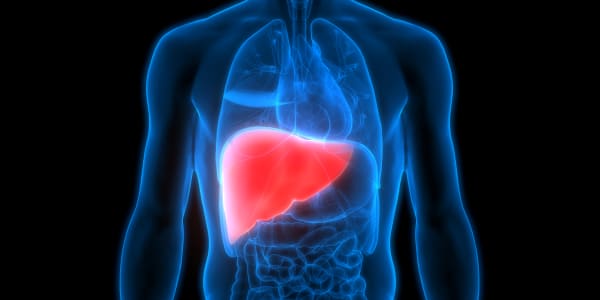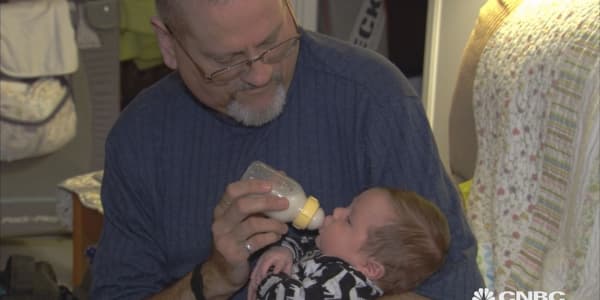A jolt of electricity is delivered to a body with bolts attaching its head to its neck. It's a scene straight out of a horror movie, but it is eerily close to Italian neurosurgeon Sergio Canavero and Chinese surgeon Xiaoping Ren's plan to transplant a human head — down to the neck bolts and electricity.
Canavero and Ren recently performed a trial run on two cadavers, prompting outrage from the medical community, which has declared human head transplantation "fake news." An examination by a team of independent scientists published this month, however, suggests that, while fantastical seeming, the scientific and medical advancements necessary for human head transplantation are rapidly approaching plausibility. Nevertheless, major ethical and moral hurdles remain.
Canavero has been talking up his plan for human head transplantation in TED talks and the media for decades, despite producing little in the way of scientific evidence, going so far as to announce in 2015 that he would perform surgery on a human volunteer — a young man with Werdnig-Hoffman disease, a degenerative disease where the muscles waste away — by 2017. The volunteer backed out, and the surgery still hasn't been done on a living human, but Canavero maintains that it is "imminent." Together he and Ren, a surgeon at Harbin Medical University, devised a procedure for head transplantation, which they performed in a handful of animal studies on mice, rats and a dog, all of whom shockingly survived the surgery and even regained some motor function.
Without more animal testing, performing such a surgery on humans would be highly unethical, and Canavero's reputation as a sensationalist among medical professionals is well earned. But as transplant surgery reaches new heights — last month a wounded veteran received the first successful penis transplant — combined with advances in biology and computer science, human head transplantation may not be as far-fetched as once thought.
Still, surgical, immunological, psychological and ethical hurdles remain.
Modern-day Frankenstein
While it sounds outrageous, keeping a detached human head alive is not the main stumbling block, and may even currently be possible. The unconscious head would be kept at a very cold temperature (50 degrees Fahrenheit) to mitigate against brain damage, and be hooked up to two pumps — one supplying continuous blood flow and the other oxygen.
An adhesive called polyethylene glycol will be used to connect the volunteer's head with the spinal cord of the donor's body. The plan is to induce the volunteer into a coma for a month while blood and new nerve networks rebuild in hopes that the body doesn't reject the head — an inherent type of risk in all transplant procedures. In addition to the spine, the head will also have to be reconnected to airways, the esophagus and blood vessels.
The major barrier is fusing the spinal cord of the head to that of the donor body. If not successful, the body would be paralyzed, a medical problem that still has yet to be solved. This is not the obstacle it once was, however.
In December, Canavero and Ren published a study in which they severed the spinal cords of 12 dogs. They then applied polyethylene glycol to the incision of seven dogs and also delivered electrical stimulation. Over the next two months the dogs in the treatment group regained some motor function, while those in the control group did not. In earlier animal studies, Ren performed the complete head transplantation with spinal fusion technique on mice and rats, as well as a dog, all of whom also regained some motor function, although it was jerky and not completely normal.
"We have shown that with this technique, spinal perfusion is possible," Ren said (Canavero did not respond to multiple requests for comment). Ren acknowledges that the project is "controversial," but insists it is necessary to save people with "working brains whose bodies have died," including those with neuromuscular degenerative diseases, end-stage cancer and multiple organ failure.
That said, his focus right now is patients with spinal cord injuries and paralysis due to accidents or other causes. "These patients don't currently have good strategies, their mortality is very very high. So I try to translate this technique to benefit these patients," Ren said. "That is my main strategy in the future."
One of the essential keys to the technique is to use a very sharp, special blade to make as precise a cut as possible. Most spinal cord injury patients, however, have extremely frayed cord endings due to the traumatic nature of the injury, so the procedure will not work for them. What's more, polyethylene glycol is toxic to humans, according to Mark Hardy, an expert on immunosuppresion and a pioneering transplant surgeon at Columbia University, who co-authored the paper examining the scientific grounding of head transplantation. Ren's work in animals is "pretty good science," but it is not translatable to humans, Hardy said.
That said, "there are other ways" of potentially succesfully reattaching the spinal cord, Hardy said. He believes it may be possible "sometime in the next 10 to 12 years."
Stem cells are one avenue. In 2014 a Polish man who was stabbed repeatedly in the neck and had been paraplegic for four years had stem cells taken from his nose seeded at his spinal cord junction. With intense rehabilitation he can now stand and take a few steps. Electrostimulation, like Ren and Canavero are using, has also shown promise in spawning nerve regeneration, though both techniques have had only limited applicability so far.
More from Modern Medicine:
Ultrasound targeting the brain is poised to revolutionize treatment for Parkinson's
Legendary inventor Dean Kamen jump-starts human organ manufacturing in US
Scientists say they are on the verge of creating a universal flu vaccine
In addition, Hardy said we may be able to bypass it with computers. "In the future, computers can replace some of these neural connections," he said. Currently, many people who receive artificial limbs also receive neural implants enabling them to move the limb just by thinking about it, as the electrostimulation in the brain triggered by the thought is picked up by the neural implant, which relays the signal to a computer and causes the limb to move. "This sounds totally fantastic and unreal, but it is happening," Hardy said.
Immunology issues
The second major technological barrier is immunology, or how to keep the head from rejecting the body and vice versa. "You have to visualize it where the body is the donor organ and the head is the recipient. It's not a head transplant; its a body transplant," Hardy said.
The body rejecting the head is unlikely because there are few white blood cells, which are produced in bone marrow and make up the immune system. Some of the immunosuppressive drugs that transplant recipients take, including Tacrolimus and Cyclosporine, which target white blood cells, and the steroid prednisone, are toxic to the brain. The brain is protected by the blood brain barrier, however, which should prevent them from entering. That said, the barrier is "leaky and unpredictable," Hardy said.
The main concern is the head rejecting the body. If that happened, individual organs including the heart would shut down and the patient would die, but there are ways to prep the body before surgery to avoid that, like replacing all the bone marrow in the host from that of the head's prior form, tricking it into thinking it is its own immune system.
Using similar tactics, in recent years kidney transplant patients have been able to live for two years without taking immunosuppressive drugs after six months of regular immunosuppressant drug therapy. "Immunosuppression is not going to be the major block 10 to 20 years from now," Hardy said. Still, there is a dearth of research, and the things that could go wrong are multitudinous.
For instance, in Ren's studies in animals, while the mice and rats successfully had their cords reattached and regained partial motor function, they all died after about two weeks due to "intestinal issues."
"The idea that the intestine didn't work is not at all surprising. It was predictable," Hardy said. The brain is the origin point of nerves that branch out from the spinal cord and go all over the body, which make the intestines move, stimulate the heartbeat and trigger all sorts of other functions. "That is one of the reasons Canavero is not ready to do anything right now," Hardy said.
Ren agrees. "Of course, we still need more studies in the laboratory using different animals," he said. He is currently focused on the problem of reattaching the spinal cord. After that, they will move on to tackling other problems, such as the intestinal issues and the central nervous system.
Psychology and ethics
Although technically we may soon be able to perform human head transplant surgery, "Its not so simple," said Allen Furr, a sociologist and ethicist at Auburn University, who also co-authored the May report. "The ethics are complex. Right now my opinion is, we don't know if it will be a good idea in the future. We are simply not ready to do it."
One glaring issue is the psychological repercussions. "We don't know how the brain is going to react to having a different body," Furr said. "Psychologically, we would expect there would be confusion," as the transplant recipient must learn how to control their "new" body. On top of that, "how folks start to understand themselves is going to become complicated," particularly as the percentage of "yourself" that is now "someone else" increases as transplant surgeries become more advanced, Furr said.
"Some folks are predicting catastrophe, that people will go mad," Furr said. Although there undoubtedly would be difficulty adjusting and the need for extensive rehab, Furr doesn't think that outcome is particularly likely. "History would tell us people would really be able to adjust," Furr said. In research on face transplants, one of the surgeries that would seemingly affect one's most intimate personal identity, for example, recipients (about 44 total so far worldwide) report that they have improved mental health, get outside more and quality of life in general post-surgery. In addition, pre-selection will be incredibly important.
We don't know how the brain is going to react to having a different body.Allen Furrsociologist and ethicist at Auburn University
Historically, there was also intense ethical backlash from the scientific community before the first heart transplant and hand transplant occurred, both of which died down. As the procedures became more common, people saw the utility of such surgeries and the "yuck" factor diminished. Still, there remain major moral and ethical quandaries around head transplantation, whether it is even worth pursuing in the first place.
It's an incredibly expensive line of research for which there is a finite amount of dollars. Perhaps more saliently, whereas a body transplant would benefit one recipient, the organs within that body could theoretically benefit up to 20 individual people — a medical version of the trolley problem.
Medical ethicists also worry about informed consent, especially at this early preclinical stage, and taking advantage of desperate people. In addition, animal rights activists raise important concerns about the suffering in animal experiment subjects — a graphic picture of a monkey with Frankensteinian stitches around its neck is especially disturbing.
To the moral question of whether to save one patient versus many in need of individual organs, Ren said it would be about finding the right donor body. A brain-dead donor can save several people, so they would not be a good candidate. "But we can use a different kind of strategy," Ren said. The donor body could serve as a chassis, for instance, implanting the organs of the head's original body, or growing the organs in a lab — something pharmaceutical companies already do, using miniature "organoids" to test certain drugs.
"It's reasonable to think about. Not only against. Think about it!" Ren said.




